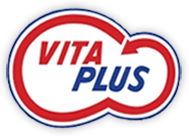
Calf facilities of high-performing dairies
What facilities provide the best environment to raise calves and heifers? Answering that question requires us to first consider each farm’s specific needs and management systems.
In March, two Midwest dairy farms opened their doors to a group of dairy producers on a tour organized by Vita Plus. Producers were able to see innovative calf facilities, learn why the farms owners and managers chose those designs, and gain insight into key management factors that make them work well.
The first stop on our tour was MoDak Dairy, Inc. in Goodwin, South Dakota, owned and operated by Greg, Jim, and Jacob Moes. The dairy milks approximately 2,000 cows three times a day in a double-30 parallel parlor and farms 3,000 acres. All youngstock are raised onsite, including a robust beef-on-dairy program. Greg and Jacob take the lead on calf and heifer management alongside calf manager Tara Hekrdle.
 In 2023, the team completed construction on new calf facilities that are unique and strikingly effective. The farm collaborated with SKOV to design and construct the fully mechanized facilities. Key features include:
In 2023, the team completed construction on new calf facilities that are unique and strikingly effective. The farm collaborated with SKOV to design and construct the fully mechanized facilities. Key features include:
- An aggressive bedding strategy that replaces bedding every week
- Fully enclosed barns with center dividing walls and 108 calves on each side
- Hatfield Manufacturing, Inc. headlock bottle feeding system with nine calves per pen
- Capacity for 600 calves on milk
- A cross-ventilated heifer barn with housing capacity for 2,200 heifers and dry cows
- Finishing facilities for the beef-on-dairy animals
During the tour, we watched staff prepare, distribute and clean up the morning milk feeding. We then took part in a walkthrough of the preweaned calf, heifer and beef-on-dairy facilities. Some primary takeaways from attendees include:
- Feeding strategy: Staff were diligent in following up with calves that did not quickly reach the headlock system, pushing them up manually and ensuring adequate milk intake.
- Finding efficiencies: From a bottle filler and cart to a piped-in water system for easy cleaning, it is evident that the farm is finding little wins in cleanliness and efficiency.
- Continuous improvement: During the tour, Greg, Jacob, and Tara expressed their desire to always find better ways to promote calf health, such as changing post-weaning protocols to shift calves’ diet and environment more gradually and reduce weaning slump.
The next stop was to Carlson Dairy, LLC. in Pennock, Minnesota, home to 2,000 lactating cows milked in a robotic rotary. The farm is owned and operated by Curney and Louise, Chad and Kindra, and Carl and Kellie Carlson. Calf management decisions are made by Chad and calf manager Joyce Weber, who both shared their insights during the facilities tour. Aspects of their facilities include:

- Cross-ventilated calf barn with multiple ventilation options for different weather patterns
- Mixing and utility room in the center of the barn as well as a center flume drain pipe
- Eight automated feeder group pens with approximately 28 calves per pen
- Urban U-40 autofeeders with parallel feeding systems
- Cross-ventilated barn for older heifers
During the question-and-answer session, Chad and Joyce shared their protocols and benchmarks for success in an autofeeder system. Some key take-home messages include:
- Cleanliness is key: Though autofeeders demand less physical labor, they require a keen eye for sanitation. Group pens are bedded weekly with high-quality wood shavings, and auto-feeders are scrubbed daily to minimize pathogen spread.
- Colostrum makes a difference: Carlson Dairy managers place a strong emphasis on colostrum management, providing two feedings of high-quality (24% Brix or higher) colostrum to heifer calves. This has led to serum total protein concentration rated as “excellent” for 75% of the calves.
- Pen size intentionality: Joyce and Chad work to keep two pens of newborn calves to 14 calves or fewer to allow for easier training and adjustment. Calves are then moved and combined into groups of 28. This larger group size is made possible by the parallel feeding system with two nipples for proper nipple-to-calf ratio.
Many tour participants are in the process of conceptualizing their own calf and heifer facilities. Through these tours, they were able to glean insights into facility design and management to potentially apply to their own operations. A sincere thank you to the Moes and Carlson teams for their hospitality.
About the author: Dr. Bethany Dado-Senn is a Vita Plus calf and heifer technical specialist. She grew up on her family’s dairy farm in northwest Wisconsin and attended the University of Wisconsin-Madison to earn a bachelor’s degree in dairy science and genetics. She completed her master’s degree in animal molecular and cellular biology at the University of Florida. She returned to UW-Madison to complete her Ph.D. with research focused on environmental heat stress impacts on the gestating dairy cow and her offspring. During her graduate education, Dado-Senn served as president of the American Dairy Science Association-Graduate Student Division.
| Category: |
Calf and heifer nutrition Facility design Farm tours Starting Strong - Calf Care |

